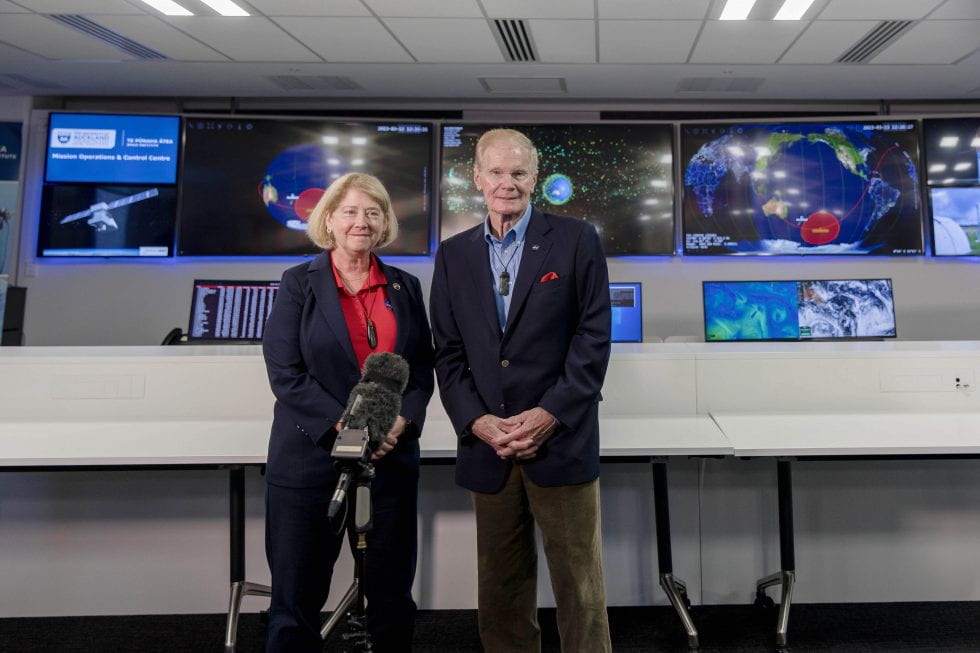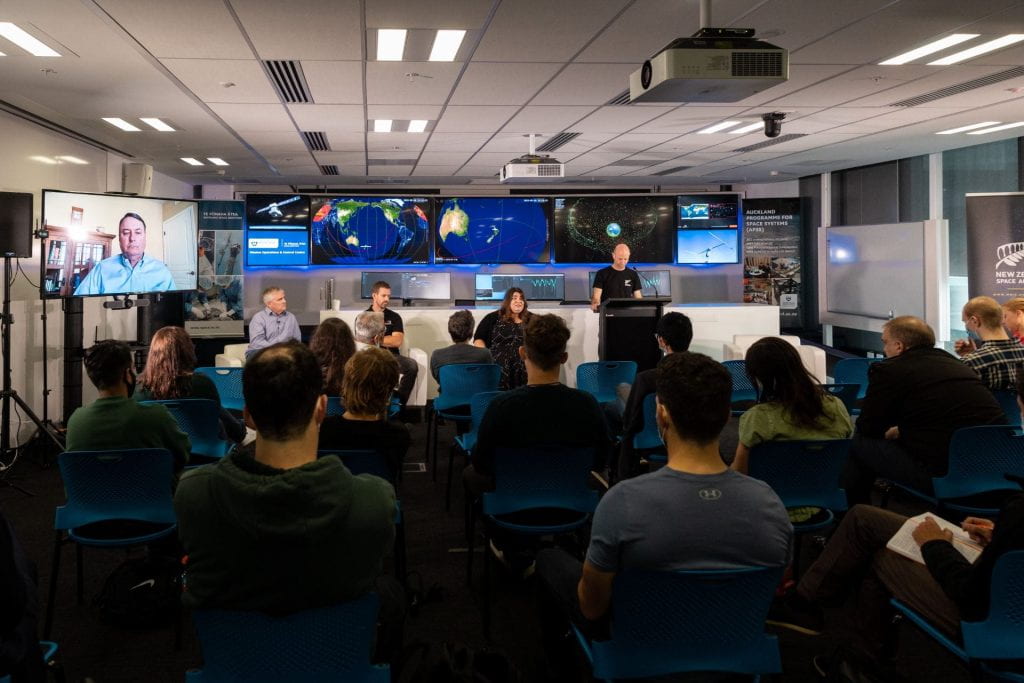The team at the Space Institute have worked incredibly hard to assemble and integrate TPA-1, the first kiwi made 3U cubesat. The TPA-1 satellite has 3 payloads: a drag sail for deorbiting, a deployable boom aka “the selfie stick” and Earth Observation cameras.TPA-1 was packaged and shipped to the Netherlands today, where it will be…Continue Reading NZ’s first 3U CubeSat, TPA-1 ships to Netherlands
Tag: news
New Zealand’s Space industry: a discussion with Phil Goff

Chris Jackson, the director of the Mission Operations and Control Centre at Te Pūnaha Ātea – Space Institute, caught up with Phil Goff about New Zealand’s Space industry. They discussed the value of the industry, jobs and our contribution to the global space economy. Check out the full post on LinkedIn here….Continue Reading New Zealand’s Space industry: a discussion with Phil Goff
Te Pūnaha Ātea – Space Institute team at the New Zealand Aerospace Summit 2024

Te Pūnaha Ātea – Space Institute attended the New Zealand Aerospace Summit in Christchurch on the 23rd and 24th September.The team had the pleasure of attending focus sessions on regulatory and certification of new space technologies, listening to startups and their experiences in the aerospace industry and the latest academic research and development.On the second…Continue Reading Te Pūnaha Ātea – Space Institute team at the New Zealand Aerospace Summit 2024
Preliminary MethaneAIR data now available

MethaneAIR will measure methane in the atmosphere, alongside MethaneSAT. MethaneAIR is specially equipped jet that has been measuring methane from oil and gas sources across North America. You can find the publicly available data here and read more about MethaneAIR here….Continue Reading Preliminary MethaneAIR data now available
Minister for Space- Judith Collins visits Te Pūnaha Ātea – Space Institute

TPA-1, the first 3U cubesat from Aotearoa, New Zealand! 🛰 Whilst still on the ground, TPA-1 snapped this shot in our assembly facility with the Minister for Space, Hon Judith Collins KC , alongside our very own Guglielmo S. Aglietti and Ben Taylor. It was a pleasure to host the Minister for Space and her…Continue Reading Minister for Space- Judith Collins visits Te Pūnaha Ātea – Space Institute
Spacecraft Operations- A chat with the people behind the screens of Mission Control

Today, our Senior Operations engineer Vernon Lewis and our Junior Operations engineer Mahima Seth spoke to Alexia Russell from the newsroom. You can find the article here, along with a podcast featuring Vernon and Mahima, who talk about the upcoming MethaneSAT mission, which will be operated from the Mission Operations and Control Center (MOCC)….Continue Reading Spacecraft Operations- A chat with the people behind the screens of Mission Control
MethaneSAT launched!

After a successful SpaceX Falcon9 launch, MethaneSAT is now in orbit! 🌌🛰️ Read the official post here….Continue Reading MethaneSAT launched!
University to operate methane tracking satellite

New Zealand is poised to take an active role in the MethaneSAT space mission through the new Mission Operations and Control Centre (MOCC) at Te Pūnaha Ātea-Space Institute at the University of Auckland.The global methane tracking satellite, MethaneSAT, is scheduled to launch soon from the Vandenberg Space Force Base in California.Designed to help combat climate…Continue Reading University to operate methane tracking satellite
NASA visits Te Pūnaha Ātea Space Institute

NASA administrators Senator Bill Nelson and Deputy Administrator Pamela Melroy recently visited Te Pūnaha Ātea- the Space Institute of the University of Auckland, where they praised New Zealand’s achievements in the space sector and encouraged graduates to take up internship opportunities with NASA. The visit provided an opportunity to discuss the Clear Shores mission, which…Continue Reading NASA visits Te Pūnaha Ātea Space Institute
Techweek 2022 – MethaneSAT: NZ’s role in solving a climate challenge from space

Te Pūnaha Ātea Space Institute was proud to host Techweek 2022 event, “MethaneSAT: NZ’s role in solving a climate challenge from space” in its new Mission Operations Control Centre….Continue Reading Techweek 2022 – MethaneSAT: NZ’s role in solving a climate challenge from space